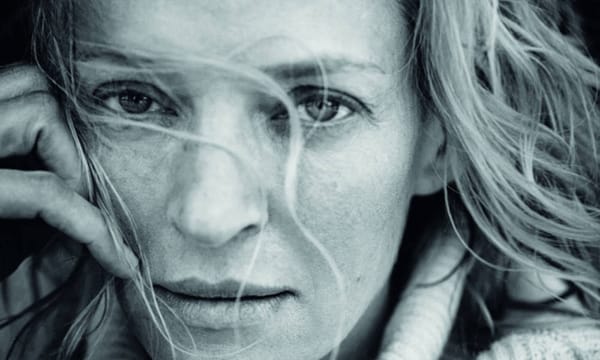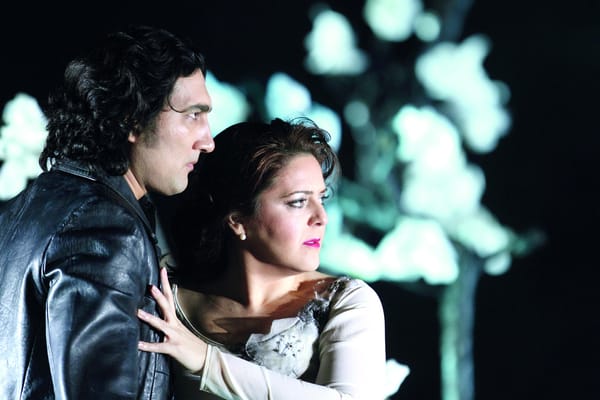Artist in focus | Zaha Hadid, 1950–2016
Zaha Hadid left behind a monumental legacy

Picture a piece of contemporary architecture. You’re probably thinking of the work of Frank Gehry – his works are considered by many in the world of architecture to be defining buildings of the 20th and 21st century. Gehry buildings, the Guggenheim in Bilbao being one, are fiercely modernist; great structures of steel and chrome tacked together that rise defiantly from the ground. His is a style that is common amongst his male contemporaries. These are loud buildings. By contrast Dame Zaha Hadid’s work is subtle, quieter – the buildings blossom, the components flow into each other. Gehry’s work is often a mere facade – once inside there is often not much of interest. Hadid’s creations have an understated drama that only grows once you’re inside. Light predominates in the interiors of Hadid’s designs, both from halogen lights and natural light introduced in unexpected ways – an almost womb-like experience is created, quite unlike being inside any other modernist building.
Hadid, who was born in Baghdad in 1950, studied mathematics at the American University of Beirut, and then went to study architecture at the Architectural Association School in London. Her heritage alone marks her out as exceptional amongst her contemporaries: google ‘famous architects’, and Hadid is the only non-male, non-white face that will come up. Her birthplace was, however, the least remarkable fact about her; her personality was just as larger-than-life as her buildings. There are countless anecdotes about her that paint a picture of her as a real life Miranda Priestley, the terrifying head of a fashion magazine in The Devil Wears Prada – during her studies, when asked for a design at a briefing, Hadid threw her scarf on the table with a flourish and said “here’s your design” and stalked out; in another instance, during the Venice Biennale, when she realised she had forgotten to pack her favourite pair of heels, she sent her assistant to her flat in London to retrieve them in time for a party the same night.
From the outrageous stories it might be easy to brush her off as merely a drama queen, more concerned with theatrics than with the hard graft of architecture. Her professional accolades discredit this – she is the only woman to have won the Royal Institute of British Architects’ Gold Medal in her own right. Technical skills gathered from her mathematics degree underpin her designs – she referenced fluid dynamics, was inspired by the organic curves present in nature: shells and waves, lilies. As her career progressed her designs matured in ambition; other architects may have balked at her impossible designs but her background in mathematics made sure that she understood how materials would meld together to create a cohesive whole. Her buildings with their undulating curves can be seen all over the world. She designed the Aquatics Centre for the Olympic Games in 2012. Wave-like (it also looks a bit like a tongue too), it’s a concrete structure that is impossibly streamlined, impossibly light looking – others may have taken the industrial, solid material and created something that hunkers down into the earth, stolid in its solidness; instead Hadid’s design seems to be on the verge of taking flight. Another of her designs, the ROCA Gallery in West Brompton is pleasingly sci-fi: white interiors are peppered with curved, sculpted pillars that seems like the inside of an alien spaceship. Some buildings that attempt to be futuristic quickly seem to become dated. The ROCA Gallery, built more than 5 years ago, still feels aspirational, filled with smooth concrete and white chrome.
Hadid unexpectedly passed away earlier this year after a sudden heart attack in hospital following an admission for bronchitis. Her death is a loss to the world of architecture which finds itself without her original voice. The first of her designs to be unveiled after her death is the ceiling of the Winton Gallery in the Science Museum. The curves swoop in and out like petals of a flower unfurling – it’s lit up with pink and purple lights. The technicolour aspect is unusual for Hadid who normally bathes her interiors in natural light or monochrome. Her sketches are on display at the Serpentine Gallery, and the ROCA Gallery and the Aquatic Centre are available to visit. Within the next few years, her design for the Al Wakrah Stadium for the Qatar 2022 World Cup will be realised – this is a building that has been dogged with controversy. By June 2015 upwards of 1200 workers had died in Qatar due to poor working conditions, the death toll is predicted to rise into over 7000 by the time the preparations are completed. Hadid distanced herself from the deaths saying that she had only been involved in the design process, and had no power to change the situation, saying "I have nothing to do with the workers...I think that's an issue the government – if there's a problem – should pick up. Hopefully, these things will be resolved."
Hadid carved out a niche for herself at the top of the world of architecture. She refused to be influenced, or cowed by her contemporaries and thus blazed a path for women in the field which even now is dominated largely by old white men. Her buildings remain as her legacy – one of uncompromising originality and fierce individuality.









